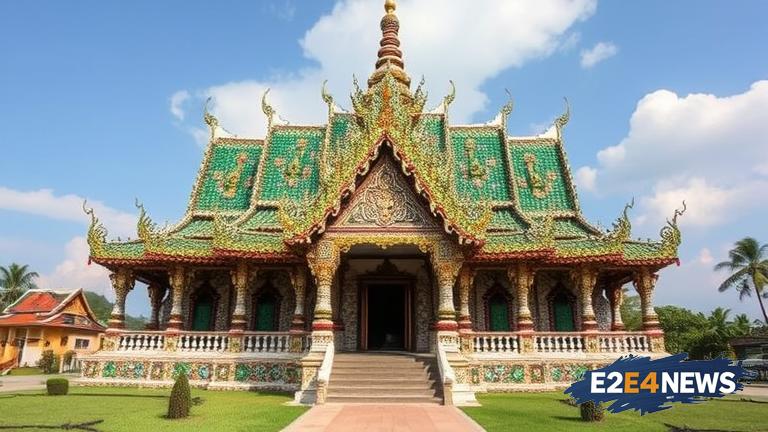The Wat Pa Maha Chedi Kaew temple, located in the Sisaket province of Thailand, is a remarkable example of eco-friendly architecture and Buddhist ingenuity. This extraordinary temple, also known as the ‘Temple of a Million Bottles,’ was constructed using approximately 15 million recycled beer bottles. The brainchild of Buddhist monks, this innovative project aimed to promote environmental sustainability and reduce waste. The temple’s construction began in 1984, with the collection of discarded beer bottles from the local community. Over the years, the monks have continued to collect and recycle bottles, using them to build various structures within the temple complex. The temple’s main hall, shrines, and even the toilets are all made from the recycled bottles. The use of beer bottles as a building material has not only reduced waste but also provided a unique and visually striking appearance to the temple. The bottles are arranged in a mosaic pattern, creating a colorful and intricate design. The temple’s architecture is a blend of traditional Thai style and modern eco-friendly design. The monks’ initiative has inspired the local community to adopt environmentally friendly practices and reduce their carbon footprint. The temple has become a popular tourist destination, attracting visitors from around the world who are fascinated by its unique construction and eco-friendly philosophy. The Wat Pa Maha Chedi Kaew temple is a testament to the power of creativity and innovation in promoting sustainability. The temple’s construction has also created a sense of community among the local residents, who have come together to support the project. The monks’ dedication to environmental conservation has inspired a new generation of Buddhists to adopt eco-friendly practices. The temple’s unique design has also sparked interest in the field of sustainable architecture, with many architects and designers visiting the site to study its innovative use of recycled materials. The Wat Pa Maha Chedi Kaew temple is a shining example of how religion and environmentalism can come together to create something truly remarkable. The temple’s story has been featured in various media outlets, highlighting the importance of reducing waste and promoting sustainability. The temple’s construction has also created a new source of income for the local community, with tourists visiting the site and supporting local businesses. The Wat Pa Maha Chedi Kaew temple is a must-visit destination for anyone interested in sustainable architecture, eco-friendly design, and Buddhist philosophy. The temple’s unique blend of traditional and modern design elements has created a truly one-of-a-kind structure that is sure to inspire and fascinate visitors. The temple’s commitment to environmental sustainability has set a new standard for eco-friendly architecture in Thailand and beyond. The Wat Pa Maha Chedi Kaew temple is a powerful symbol of the potential for creativity and innovation to drive positive change in the world.





